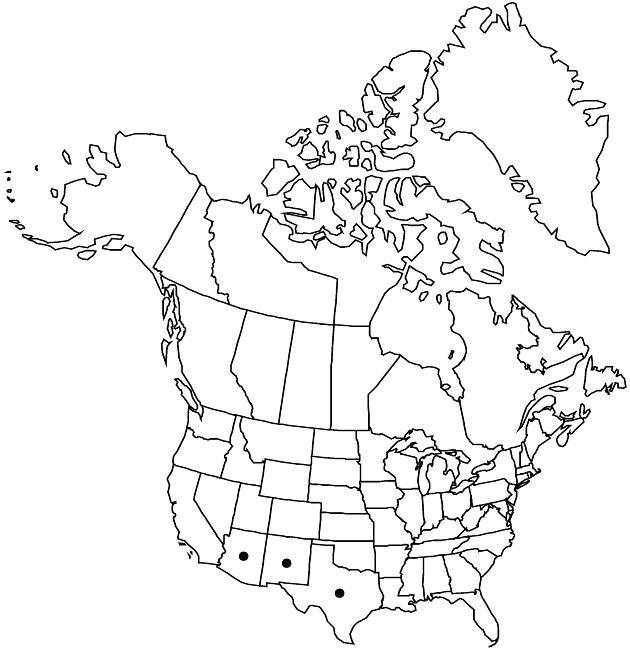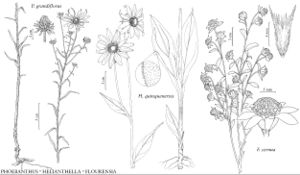Flourensia cernua
in A. P. de Candolle and A. L. P. P. de Candolle, Prodr. 5: 593. 1836.
Shrubs to 100 (–200) cm. Leaf-blades elliptic to ovate, 10–25 (–40+) × 4–15 (–20) mm (margins sometimes undulate). Ray-florets 0. Disc-florets 10–25 (–40); corollas 3–4 mm. Cypselae 4–6.5 mm; pappi 2.5–3.5 mm. 2n = 36.
Phenology: Flowering mostly Sep–Nov.
Habitat: Limestone or alkaline or clay soils, gravelly sites, desert scrub
Elevation: 800–2000+ m
Distribution

Ariz., N.Mex., Tex., Mexico
Discussion
Plants of Flourensia cernua usually have a tarry odor and are often locally co-dominant with Larrea tridentata throughout much of the Chihuahuan Desert.
Selected References
None.
Lower Taxa
None.
"broader" is not a number.
... more about "Flourensia cernua"
introrse +
connate +
herbaceous +
scarious +
absent +
hirsute +
papillate +
spiciform +
bristlelike +
continuous +
nerved +
mostly elliptic;lance-oblong or ovate +
winged;ribbed;winged;ribbed +
1;15 +
stigmatic +
absent +
Tarbush +
zygomorphic +
yellow +
winged +
dimorphic +
4mm;6.5mm +
staminate +
staminate +
straight +
glabrous +
vernicose +
scabrellous +
distinct +
proximal +
1;5 +
bisexual +
dispersed +
singly +
discoid +
indeterminate +
Present +
surrounding +
campanulate;hemispheric +
elliptic;ovate +
4mm;15mm +
petiolate +
alternate +
cauline +
deltate +
2-carpellate +
inferior +
attached +
anatropous +
persistent +
fragile +
falling +
absent +
tough +
thick +
absent +
connate +
persistent +
distinct +
falling +
in A. P. de Candolle and A. L. P. P. de Candolle, Prodr. +
1836 +
absent +
sterile +
paleate +
flat;conic-ovoid +
fibrous +
subulate +
exalbuminous +
modifed +
2;4 +
Illustrated +
alternate +
branched +
erect +
continuous +
2-branched +
papillate +
Flourensia cernua +
Flourensia +
species +
much shorter +
cylindric +
shorter to longer than campanulate +
